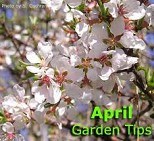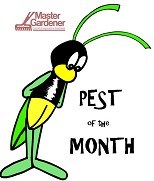BELMONT, N.Y. — Did you get spring plants for Easter? Well you may be lucky enough to get more for Mother’s Day; so what do you do with them all? First, check the tag with the plant, which will give you some basic information and then read below for more details. Remember, you can plant them in your garden and enjoy them again next year!
Here’s How:
TULIPS, HYACINTHS AND DAFFODILS – should be planted about 6 – 7 inches deep. DO NOT remove the leaves but allow them to die back naturally. You can remove the dead foliage when it is brown and comes off easily in your hand. The dying leaves will provide nourishment for the bulb. When planting in a bed, try to plant other things with them such as day lilies, iris, or peonies to disguise the browning foliage of the tulips.
CROCUS, MUSCARI (GRAPE HYACINTHS) and other small bulbs – PLANT 2-3 inches down and leave foliage on. These bulbs should be planted right in the front of the border as they are very short and would be obscured by other plants – for instance in front of the tulips.
LILIES – the “bulbs” look different from Tulip or Daffodil bulbs. They have small bulblets surrounding the stem and if some get knocked off in planting, just put them in the hole also. They should be planted in full sun about 8-10 inches deep. Leave the foliage on the plant to nourish the bulb. Remove the foliage when it is brown and comes off easily in your hand
AZALEAS – These shrubs are part of the rhododendron family. They need acidic soil – pH 4.5-5.5. They will grow in sun or light shade and prefer moist soil. Mulch with peat moss or well-decayed leaves. Azaleas can grow to 3 feet tall and 3-5 feet across.
HYDRANGEAS – Plant as deeply as it was growing in the pot in a sunny area. Check the tag to see if the variety you have prefers acid soil. Some varieties will change from blue to pink in alkaline soil and to blue in acid soil.
CALLA LILIES – Plant 4 inches deep and about 12” apart in sun. Mulch and water well. Once flowering has finished, the plant needs a dormant period. Stop watering and allow it to go dormant. In fall, dig up and store the bulbs in a pot indoors and put out again the next spring when all danger of frost is past.
MUMS – Only the hardy or garden mums will survive another year. Remove from pot and plant as deeply as it was growing in the pot in a sunny area. Remove spent blooms, but leave the foliage. You may want to mulch or winter protect them.
PRIMROSES – these come from roots and should be planted in front of the border when danger of frost is past. They grow 3-4 inches tall and will come back year after year. Plant in sun or partial shade. Some drop seed and will grow from seed flowering the second year. When clumps get large they can be divided and moved to a different location. The Japanese type has a long stalk with flowers on top of the stalk and along the sides. The Himalayan variety has a globe shape cluster of flowers on top of the stem.
All of these plants will grow in this area, although the Calla lilies need to be lifted for the winter. All the others can remain in the ground and should be mulched well. Nothing says spring like beautiful early spring flowers, so if you haven’t planted any in the past, consider planting spring bulbs this fall for a spectacular spring show in 2018!
—Pam Jones, Master Gardener Volunteer
Cornell Cooperative Extension of Allegany County
- See more at: https://www.morningagclips.com/do-your-plants-runneth-over/?utm_content=articles&utm_campaign=NLCampaign&utm_source=Newsletter&utm_term=newsletteredition&utm_medium=email#sthash.PYxPcmrC.dpuf





